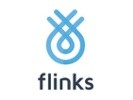
Flinks gives you the power to build the future of finance. Connect, enrich and utilize financial data to delight your customers with amazing products.
When It Comes To Banking, UX Is the New Black
It is inherently linked to the user’s wants, needs and motivations, and it’s everywhere.
Omnipresent UX
The user experience, also referred to as UX, describes how a user feels and interacts with a product or service. Most people probably do not know it, but they are constantly surrounded by UX, in every single mundane thing they do on a daily basis.
Take going to the grocery store, for example. Everything in the experience, from the initial access to the doors to the positioning of the shopping carts, from the seasonal products you encounter when you first step foot inside the premises to the maze-like way the alleys are designed, without forgetting how the products are disposed; all these elements have been analysed, evaluated and thoroughly engineered to satisfy the user’s need for simple organization and usability, and ultimately, to make the user buy more.
Another important point that is a driving force in developing and integrating great UX is to make the experience a pleasurable one for the user. One of the biggest threats to a company’s profitability (and ultimately, survival) is for its UX to be perceived as an irritant by users ; research shows that this can decreases customer loyalty tenfold.
That’s the reason most grocery stores have a generic layout ; fruits and vegetables are usually found at the entrance, meat and fish at the back of the store, dairy products at the very end of all the alleys, with various non-perishable products in the alleys between those sections. It makes the experience predictable and easy for the user, and reduces friction to a maximum.
While UX is used everywhere, a surprising up-and-coming market segment is the finance world. Indeed, traditional banking is perceived as somewhat dated, especially by the tremendously influential millennials. This perception wasn’t created out of thin air ; a recent investigation by Bain and SAP found that only 7% of bank credit products could be handled digitally from end to end. In a world where we are used to instant gratification in any and all spheres of our lives, it makes sense to expect the same coming from the institutions managing our money.
Another big problem encountered by customers is that often, they have financials products in different financial institutes. For example, a customer could have his main banking account at Bank #1, his insurances with Bank #2 and his mortgage with Bank #3. This complicates the management of the client’s assets, since the user has to go from one interface to another to get a glimpse of his current financial situation. Such a problem, which might seem benign, may become a real irritant in the long run. While it’s easy to assume only the customer is losing in this situation, the truth is that the financial institutions may be impacted as well.
A New Banking Era
The frustration that emerges from the institutional-centric way most financial websites are designed has lead to numerous new competitors on the market. These startups are applying tremendous pressure on the banks to keep up with the fast pace at which changes are being observed within the financial market. In order to stay competitive, banks have started partnering up with financial technology companies (also known as fintechs), to integrate solutions that are significantly enhancing their traditional offerings, with a particular focus on the user experience.
Customers are asking for online banking services that have clean, engaging and efficient mobile and web user experiences, and better digital banking tools. They want to be able to apply for loans online and to not have to go to a branch office in order to deposit a check, and the demand for better online financial applications will only increase over time.
With these wants and needs in mind, and with a focus on making customers’ lives easier, Flinks created a powerful financial data aggregator API. This tool, which is unique to the Canadian market, works as an extension to any app, and allows it to connect to their customers’ banks; this connection grants access to validate account ownership, verify account balance or access transaction history. This tool is essential to a great financial UX, because it bypasses all irritants such as needing to supply documents to prove your identity, having to retrieve your account/folio numbers to complete an online cash transfer, or having to submit a void cheque. Through the API powered by Flinks, all these tasks are automated and it allows for a smooth and seamless experience. What’s more, the user will never know that Flinks is behind this tool, since it is integrated directly within the provider’s app and entirely customizable. Therefore, all the customer sees is important information he can access easily and a branding he is familiar with, all within an easy-to-use platform
That’s a good example of great user experience; providing customers with perks and benefits that will heighten their satisfaction and drive up their retention rate, which will give the provider a competitive edge within its market. In what ways could you improve the UX you provide to your customers?